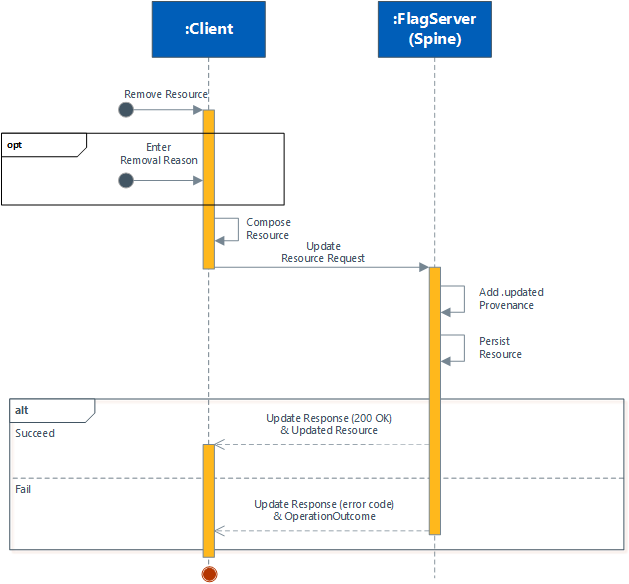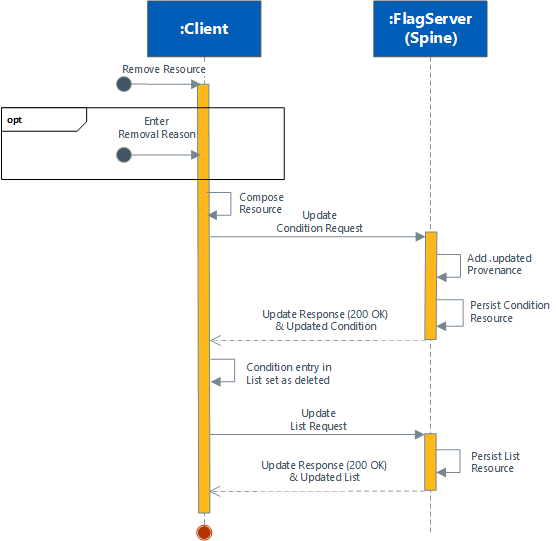Note: the only update allowed to any part of a Reasonable Adjustment record is an update to status (of status = active > inactive). Any corrections to an already committed Reasonable Adjustment element therefore requires delete of the existing item, then creation of a new Flag, Adjustment or Impairment resource.
Delete Resource
This pattern applies to deletion of a single resource.
- Consent, Flag, Condition and List always use this pattern for deletion.
- Delete Condition triggers Update List if there is an existing List - if there is a Condition to delete, there should always be a List

Delete Resource request - response
Given pre-requisites:
- authenticated, authorized RBACed Spine-User
- validated NHSNumber
Delete Resource Request
For each resource
PUT https://clinicals.spineservices.nhs.uk/STU3/[resourceType]/[id] /HTTP1.1
Delete Resource Response
200 OK http response code (and mirror PUT payload)
(or operation outcome if failure to find or process)
Delete Condition resources
The Condition resource is pointed to by a List.
After successful deletion of the Condition resource (see the Delete Resource pattern above), the Client must update the List instance

There is no specific http request here.
The pattern consists of sequenced Delete Condition and Update List interactions.
Updates to List resources SHALL comply with Resource Versioning requirements
and include an If-Match header containing the resource version id ETag (see below).
Managing Conflicting Updates
There is a risk in some cases that two clients will try to update the same resource. If both clients had the same version of that resource to begin with, there is a risk that the second overwrites the updates of the first. To prevent this happening, clients MUST submit update requests with an If-Match header that quotes the ETag from the server (see the versioning page for details of version IDs). This specifies the version of the resource that their updates should be applied to, so a second attempt to update the same version with different changes can be detected as a conflict and rejected (this is also known as optimistic locking).
Updates would include the versionID in the HTTP header as follows:
PUT https://clinicals.spineservices.nhs.uk/STU3/Flag/744eec7d-8951-4722-ad74-dc34e86d4e1a
If-Match: W/"25777f7d-27bc"
If the version Id given in the If-Match header does not match, the server returns a 409 Conflict status code instead of updating the resource.
IMPORTANT NOTE: All updates to resources defined in this API MUST include an If-Match header or they will be rejected. The server SHALL return a 412 Precondition Failed in this case.
